|
The exact words my four year old son said to me the Sunday night after 14 hours of yoga teacher training. We proceeded to practice ‘his practice’ of made up poses on my two sticky mats. I have no idea how he came up with so many moves - 20 plus! I was so proud of him at the end when he knew to close with Namaste. How sweet!
This momma was away from her family a large part of the weekend and it was so sincere that my youngest wanted to connect with me through yoga. He knows I just can’t get enough! Fourteen hours over three days is hard to summarize into just a simple post. But let me share some of the highlights. Friday night was the first session of my new Teacher’s Training. Kinda confusing, I started Yoga Within’s 200 hour Teacher’s Training to help fulfill not only my hours and senior teacher requirement but also to provide the much needed structure and community I was looking for in my training. More time, yes. More practice, yes. More knowledge, fore sure! But right from the beginning my decision to take on more was solidified with the beautiful presence of Melanie and other senior teachers. We participated in a marigold ceremony, or what I like to call it, to represent a new beginning and initiation to the program. Each new student was welcomed to the circle and presented a small marigold. Tara Woltjen provided a detailed back story and meaning of the marigold. Some of which include marigolds as a sacred offering to the Gods and promotion of cheer and good relations in relationships. It was a thoughtful and elegant way to begin a new page in my yoga journey. The following day I needed to switch group, literally, a jump back into the YAA’s Teacher Training program. The focus of this workshop was the Bhagavad Gita, headstands (Sirasana) or supported headstand (Salamba Sirasana), and a brief review of pranayama (Kapalabjati and Bhastrika). I can see how they all fit together. The common thread was the head and/or skull. Right off the hop, we dove into the Bhagavad Gita. Although I’ve read parts of it, I still need to take a deeper look. For one who is very pro-peace, reading about war isn’t one of my favourite past times. Yet, our discussion opened my mind to inquire about the themes in the Bhagavad Gita not necessarily the obvious story line. Can I see the struggle of Arjuna and his inquiries with Krishna as a reflection of the human struggle and connecting with God? Needless to say, I’ve got more reading to do and to be honest, I a bit more intrigued now. What I did like most about learning more about the Bhagavad Gita was that it was written as a love song. Something that I don’t completely understand yet, it leaves me more to learn! With all the talking, I almost forgot about the asana practice we had coming. It was headstand! ***sense my fear and uncertainty*** Although there was fear, I don’t think the fear was rooted in truth. I was super nervous about trying it but solely because I thought I’d need to literally put all my weight on my head. Never really been taught how to do it, I clearly had no idea. Teddy, the senior teacher, took us through multiple progressions to the final wall supported pose. I hadn’t realized how important the forearms and shoulders are for this pose. Ninety percent of the weight should be in the arms with only a small amount on the head. We worked on mountain pose, cow faced pose arms (Gumukhasana) and eagle pose arms (Garudasana). Also on downward facing dog and wide leg forward fold (Prasarita Padottanasana) with the sole purpose to prepare for headstand. We finally went to the wall to give the asana a try. With clasped hands right up at the wall, the head is cradled in the palms and the forearms are firm (pressing into the ground), it is then and only then that it is safe to try to get the legs up the wall. Slowly I walked my feet up towards my face and what felt smooth and somewhat magical, my legs went up and I was in head stand. The fear vanished as I was completely comfortable in the pose. Now I respect it takes a lot of pre-work to get to this place and respect that I am only just beginning my headstand journey. It isn’t going to be something I teach any time soon as it is known as the King pose! Headstand’s mystic and anxiety-rising appearance is not longer. I am incorporating it in my home practice and look forward to the pose. It’s completion brings along a bit of a [head]rush and I’ve been following it with a supported child’s pose then a bridge. It is important to follow the headstand with a shoulder stand (the Queen pose, of course). Although I struggle with the shoulder stand (getting the chest opening), it is nice to pair these two together for my home practice. What a whirlwind weekend of yoga! I can’t lie…I loved every minute of it! LW
0 Comments
At the 13th YAA teacher training workshop this weekend, I was challenge to think of the roles we play in our lives. Soon to be, I hope, yoga teacher will be one of the roles I play. And what does that mean? Melanie, the workshop facilitator, reminded us newbies that when we are teaching yoga, we are yoga teachers. We must be cautious that we keep to our role (and our scope of practice) instead of ‘playing’ other roles we play in our lives. It got me thinking. Will I be able to take off my exercise physiologist hat when I teach yoga? I suppose the mom hat will be off as well as the sister, daughter, wife and friend hat will be off too. But there is an obvious link to what I do as my profession to some of the responsibilities of a yoga teacher. The most glaring is the physical body aspect. It might not be a total removal of the exercise physiologist hat as I won’t be able to deny proper biomechanics and alignment. But, I do like the idea that “you are responsible for you” and giving yoga students the reigns when it comes to how they practice on their mats. My job will be to guide students not dictate what they should and shouldn’t do. I suppose I already do that in my job yet, it will be a bigger part of my role and tool box as a yoga teacher. Lending to the discussion on being a yoga teacher, we also discussed the intermingling of the word “restorative” versus “Yin” versus “therapeutic” yoga. Thinking I would dabble in these forms of yoga, it was a great discussion on the differences and not the interchangeable use of the terms. Restorative yoga is to provide support and relaxation. Hence the word restore. This practice is not only for the physical but also for mental and emotional restoration. Yoga students are placed into asanas that allow for letting go and rest. No pain or discomfort should be present. I personally love this type of practice particularly at the end of a busy week or when I am feeling overwhelmed. It would be a gift to provide this practice to future yoga students! Now to Yin yoga. This yoga practice I am not as familiar with as most of my practices have been at home in the privacy of my computer screen. I am intrigued to learn more about ‘taking students to their edge’ and holding an asana. We reviewed the basics which include picking a pose, taking the pose to the ’edge’ and then being still, both mentally and physically. In past practice and also in this workshop, it is emphasized that the ‘edge’ is sensation not pain. So differently than restorative yoga, Yin yoga isn’t necessarily a relaxing process. The final type of yoga, that is clearly different than the rest, is therapeutic yoga. Although it might be relaxing and/or take one to the edge, therapeutic yoga’s sole purpose is to focus on a specific condition or what I heard someone say this weekend, “issue in the tissue”. It makes complete sense that an asana practice could be suited to a specific condition and/or focused on a specific part of the body. This type of practice is very intriguing to me working in primary healthcare. I see people daily who are dealing with a chronic disease and/or injury. I had always seen myself teaching this type of class. On a final note, that wraps up my workshop experience, was again more about logistics that anything else. Melanie provide wisdom and insight on class planning. I had never thought about structuring a class in this fashion but it makes so much sense. Here’s the gist: Think of the climax, peak portion of your class; essentially what you are working on. It would include the main asana you wish the students to do in class that day. Your goal is to lead yoga students to that peak thoughtfully that they can successfully (whatever that looks like) complete the pose. After the peak, it is your job as the teacher to slowly take them away from said pose. What a brilliant way to formulate a class!
This workshop, although very focused on restorative asanas, I gained so much more insight into being a teacher and how I can teach than the physical pieces themselves. LW I’ve made it over the 300 week mark. Say what?! What an amazing journey this has been! Some would say long but I’d say worth every single week! The asana practice for this month’s teacher training was all about arm supported poses. Quite frankly, the harder or shall I say hardest asanas out there! Before the workshop we received multiple handouts on the anatomy of the shoulder joint as well as the biomechanics of the associated joints. I took a read through ahead of time and thought to myself, we will have our work cut out for us! The upper extremity, in some cases, is the poor, neglected area of the body. The larger, more stable pelvis tends to get all the attention. This is no exception in my practice. Yes, I use my upper body but do I really USE my upper body to my advantage? Over the years, I’ve felt my mobility start to wane as I focus more on my hip and back (this week leading up to the workshop being a prime example). Even though I prepped ahead of time, I never know what learnings will come from my workshops. The biggest take away was about alignment. I’m fully aware of scapular retraction/protraction/elevation/depression and humerus flexion/extension but it is one thing to have book knowledge and the other to put it into practice. Judi, the senior teacher, was adamant that we had proper alignment in the wrist, elbow and shoulder joints. Her main focus was on pronation of the wrist and external rotation of the humerus. Another way to say it was the arms acted like ropes, you know, the rotation of the rope fibres curling around to provide integrity and support. The bones (ulna and radius) and muscles (forearm flexors and extension, too many to name) below the elbow going one way and the bone (humerus) and muscles (biceps and triceps) going the other. This opposite action around the elbow joint amazingly lengthened the arm and made it as solid as a taut rope. The triceps was the key for me. How often have I outstretched my arms without really engaging my triceps to their full capacity? Lots…and my posture (read: that hunched forward position) definitely can show the internal rotation of my humerus! We went through multiple variations of Adho Muhka Svanasana (downward facing dog) to ensure we had proper movements before we headed into more complex poses as Chaturanga, Purvottanasana (inclined plank), Vasisthasana (side plank), Bakasana (crow pose), Parsva Bakasana (side crow), Mayurasana (peacock pose), Pincha Mayurasana (upright peacock, forearm stand) and Adho Muhka Vrksasna (handstand). Thankfully, the pre-work we did, although exhausting, was exactly what we needed for the advanced poses. In every asana, I continually focused on the proper alignment, always thinking that my strength and foundation is coming from my wrist, elbow and shoulder joints. In Tadasana, we mindfully worked through proper alignment in shoulder hyper-flexion, adduction and extension (similar to the arm movement initiation of sun salutations). What might have seemed like old hat or easy movement, was very difficult to do with full attention to alignment. Subsequently, my arms had increased mobility that even showed up in Utkatasana (chair pose).
Very much welcomed mobility! Although I write about the physical, we also dove into the third Pada of the Yoga Sutras. We talked at length about Dharana (concentration), Dhyana (meditation) and Samadhi (pure absorption). To be honest, I see these words on paper and since they are still somewhat foreign to me, I find it difficult to recall what they mean. Yet, after the workshop, I have a better understanding of the link to mindfulness and what Samyama is (the three - Dharana, Dhyana and Samahi - together constitute perfect disciple and self-control). So much more work I need to do more on the philosophy! Probably another 300 weeks to do so! LW Can you think of anything better than to be greeted at a workshop with a hug?! I walked into my most recent Yoga Association of Alberta workshop to be straight away embraced by the facilitator/senior teacher. How lovely was that! We dove deep into the philosophy of yoga this session. This is where my ears perk up and I am all in. I need to be on my game, especially with the sanskrit words and their meanings. Although I am comprehending much more than when I start my teacher training, I still need laser focus on the words (and spelling!) and how to weave them into my understanding of yoga. The key pieces this time around include: 1. Right off the hop - The Gayatri Mantra… This mantra, when recited, bestows wisdom and enlightenment, through the vehicle of the Sun (Savitr), who represents the source and inspiration of the universe. What a fitting way to start a practice. We repeated the mantra over and over while adding a line at a time. I really needed the time to process how to say the words, and let’s be honest, feeling comfortable chatting in the group. It is still something very new to me and I am not really at ease with it. Not that I don’t think it is beautiful, because I do, yet I just lack confidence in the process. Chatting a mantra reminds of a singing which over time I think will give me ease. 2. Pratyahara
In my notebook, I had to write this word out three times before I got the spelling right! Pratyahara is the fifth limb of yoga with the focus on quieting the mind. I loved the analogy of a tortoise, an animal who can remove the external and just be inside. How can I be more like a tortoise and restrain my senses? Likely through my yoga practice. I would argue that my time on the mat usually requires a lot of focus, especially on the breath. When I work on my inhale for eight counts, two second retention and eight count exhalation, I am within myself. The second I fall off my breathing, then I start hearing all the noises in the room or the people around me. This might be why I like to close my eyes for a majority of my practice. It shuts out all possible visual cues. 3. Anahata Chakra The heart chakra, Anahata, is the most central chakra in the body; it is thought to link the bottom three chakras (earth, water, fire) to the top three chakras. Interestingly enough, the element of Anahata Chakra is air which stokes the fire in the Manipura Chakra below. Connecting the dots! The Chakras have been very intriguing to me of late. With reading, Caroline Myss’ book, Anatomy of Spirit, I have had a greater understating of the Chakras. After the workshop, I went straight to the book store and found a Chakra book. Bought it on the spot! As always, so much more to learn! With all this philosophy talk, we did work through some chest openers such as cobra (Bhujangasana), spinx (Naraviralasana) and camel (Ustrasana) poses. How fitting for Anahata Chakra. Continuing to open and make my yoga practice come from the heart, LW It was refreshing to get back to teacher training workshops after the holiday season. Although the break was good, I was happy to get refocused on my journey as a yoga teacher.
This workshop was focusing on the abdomen - not only with the poses we were to review and teach but also Manipura Chakra, the navel Chakra. I’m first to admit that I’ve only explored the Chakras by reading a couple articles and doing some minor research on the concept. It was interesting to not only learn from a senior teacher but also others in the room who have studied the Chakras more extensively than I. I can’t lie, I have had some stomach upset over the past week and was hesitant to see how my body would react (good or bad or neither) in regards to the practice ahead of me. The mental practice, however, was probably the most intriguing. In discussion about Manipura Chakra, it was discussed as the “City of Jewels” where we learn our gifts and talents (senior teacher hint…that is a quick and dirty summary of what the Bhagavad-Gita is all about; more on that another day!). Since this Chakra is considered the navel, if the diaphragm is tight then the flow of energy (prana) can get stuck or not move easily through this area. Why a tight diaphragm? Maybe an anatomical reason due to poor breathing or tight abdominal muscles (‘suck in the gut!’) or maybe related to more emotional reasons like holding on to ones fears. So fascinating! I loved the quote “take courage to be who you are” which was stated by the senior teacher. Prompting to release, soften and open the navel Chakra. As we practiced, connecting to Manipura Chakra was the thread through the entire workshop. During our pranayama practice, we directed our breath to the navel but also incorporated breath work to the pelvic floor and the root Chakra. One such sequence was on inhalation to lift the root Chakra to the second Chakra (sacral) and finally to Manipura Chakra with breath retention. With exhale, release the Chakras back to their originating positions. This was new to me and have never focused on the Chakras this much with my breath. Sensational! Our asana practice consisted of: Supta Padangusthasana, Anantasana, Paripurna Navasana, Ardha Navasana, Jathara Parivartanasana, Urdhva Prasarita Padasana We focused our attention on Jathara Parivartanasana (straight leg spinal twist) as it can be a challenging pose for alignment. The version we practiced as an individual and as a group was the bent knee supported (with blocks between the knees and under head) asana. Funny enough, I got to be the 'demo girl’ showing my tight scapular region. Oh was a stretch I had when supported by fellow students. I also found that I haven’t been positioning myself correctly with spinal alignment and arm placement. AND maybe most importantly, I could not necessarily connect to Manipura Chakra in the pose. Something to work on…or as the senior teacher said, ‘explore’. It was a great time to explore my version. Needless to say, this single session was jammed packed with lots of learning. More things that I can’t expand on today but maybe another. Oh - and how did my abdominals fair? Really good! My GI symptoms subsided and felt back to normal…if not slightly more aligned, physically and energetically. Fired up in the belly, LW It is hard to believe that I am half way through the required weekend sessions! In workshop #8, we touched on the life cycle of the breath, the importance for alignment and the Bhagavad Gita. Judi, a senior Iyengar teacher, provided her insights and guidance to all of the attendees. I was fortunate to have a chance to speak with her privately about Iyengar training. She told me that it takes four years to complete the certification and the training is very intensive. At this point, I feel like I am still finding my way. It was nice that Judi shared some insights with me. Now into the meat and potatoes… Initially, we reflected on words of Patangali whereby Sutra 2.49 recommends that pranayama be practiced ‘after asanas’. The Yoga Sutras also note the three movements of breath in Sutra 2.51 as inhalation, exhalation and retention. We had a lengthy discussion about the prolonged inhalation and exhalation which is matched with interruption or suspension when we retain breath. Judi provided an interesting perspective on the life cycle of breath. Starting with inhalation, this portion of breath can be seen as birth and new beginning. The retention before exhalation can be seen as a time for growth. The following exhalation is linked to decomposition with the final retention before the next inhalation as the non-physical. I’d like to think that inhalation expands us as in birth. The following retention is when we are full of breath and we continue to grow. The exhalation is the obvious deflation and emptying or as described above decomposition. With the final retention as non-physical as there is no longer any breath present and the lungs are deflated. A super intriguing way to look at the breath. It is almost like with every breath we experience both birth and death. Kind of a unique way to look at the breath and the nature of life. The second part of the workshop focused on alignment. The awareness of alignment is a large part of the Iyengar practice. Judi quoted Iyengar as saying that ‘dis-ease is the lack of concentration’ and that ‘whatever integrates, will heal’. When practicing asanas, it is key to be aware of alignment to gain the most benefits. In other words, practice quality movements for the greatest rewards.
Major pieces to remember as a yoga teacher are to ground in the foundation for stability and mobility and elongate to make space. Further, looking at the shape of your students can be very insightful. How do they keep the shape? How can you help them find the best shape for his/her own body? It may require amendments or additions that help students work through the poses. The final aspect of the workshop was a dedicated to the Bhagavad Gita. We were required to read the introduction to the Barbara Stoler Miller book, The Bhagavad Gita: Krishna’s Counsel in Time of War prior to attending the workshop. This is my first experience with the Bhagavad Gita and I’m not so sure about it. Judi presented the Bhagavad Gita in a new light, stating that it was a ‘love poem’. Not so sure of this book, I sat and listened intently about why a book about war is actually about love. Some interesting elements about the book include that it was thought to be written over centuries as it is the sixth book of the great war epic the Mahabharata, that there is an assignment of a spiritual quality to a human being (i.e., Krishna), and that repetition is used throughout the book that builds on itself. Judi suggested that Chapters 2, 4, 10, 11, and 12 are the most crucial in the 18 chapter book. The Bhagavad Gita challenges the state of mind but asking the question ‘do you have moral space to receive an alternative teaching?’. Furthermore, it challenges us to look beyond the basic story of war and ask ourselves: Do we take our state of mind for granted? Can you go beyond your state of mind? Can you hear Krishna’s message? I suppose I have a lot more reading to do to understand the Bhagavad Gita. Overall, there were many takeaways from this weekend’s workshop. As I continue to say, I have so much to learn, LW “Your Mat is Your Biggest Mirror." Walking out of the blistering cold and into teacher’s training this weekend was a breath of fresh air. Workshop #7 provided the structure I crave and the logistics in how to accomplish it. Melanie, the senior teacher presenting the content at this workshop, not only provided the details but also with handouts!
I’ve died and gone to heaven! Now this is what I’m talking about! All kidding aside, I found the content necessary as yoga classes are not fitness classes. Sure, they are similar. But I needed to learn how to run an effective and suitable class for students. To begin with, we had a discussion about ‘seeing who is in front of you’ in class. Particular questions to ask even before starting are: What are you wanting to offer? Will the class be a drop in or a registered class? What level do the students need to be proficient at? No, not always perfect answers to these questions. But at least having an understanding who you will be teaching, will help dictate how and what you teach. And most importantly see who is in front of you in your class. The lesson plan is important but not so important that you can change it on the fly. Improvising, as I’d like to call it. It is however important that you do give an outline of what to expect to new students and provide a comfortable and welcoming space. Offer the lead yet not so much that they don’t feel it in their own bodies. ‘Let them feel and move in their own bodies’. I don’t think it was until this workshop that I really, no REALLY understood what the breath tells yoga teachers in class. The opportunity to listen to the students breathing can tell you if they are listening to their bodies (strong, rhythmic breath) versus not (short or even non-existent breath). Breath is a key to assess for ease. And thus, try and teach student to self-adjust with lots of options via verbal and visual cues to allow them the most ease in their bodies. An interesting approach, which I will use in our forever striving world and thriving (or not) society is this: demonstrate with someone who will say ‘no’ to show the other students that it is okay to say ‘no’. Brilliant! I also appreciated the hints of how to assess beginners on day one, class one. Cue the students while lying on their backs to bend their knees and place their feet on the mat if they have any low back pain. Instantly you can see who in the class has low back pain. Further, cue the option to support the neck with a folded blanket under the head. Those who place a blanket under the head show you as the teacher that they may have some neck issues. More ingenious tips and tricks! Being very practical, this workshop definitely helped me think how best to flow a yoga class while setting a peaceful space for beginners. I feel more confident in my ability to design an effective lesson plan and implement it! How fitting was the intention of this workshop was to help student “find comfort in their discomfort”. When in fact, I found my comfort in my discomfort when thinking about the daunting task to designing a class and teaching it! LW Following workshop #5, we continue on our exploration of the proper conduct or more so the ‘to dos’ with the Niyamas. Although I like the rules from the Yamas, the Niyamas seem a bit softer and actions that you can take instead of actions not to take with the Yamas. Teddy, the senior teacher teaching the workshop, made an analogy of a recipe as to how to think about the Niyamas. Reflecting on what is the actual recipe but also what are all the pieces (or ingredients) that make the recipe. Interestingly, she pointed to the lineage as a key ingredient but also the actual practice as being what one can taste from the recipe. The analogy helped us sift through the Niyamas with a new perspective. Here are the details... 1. Saucha- Cleanliness
Clearly personal cleanliness is important yet, this Niyamas is more about the cleanliness of the mind. How can we purify our thoughts? I have had many yoga practices that have been rushed into or started with a negative mindset or layered with what has happened thus far in the day, yet I can say with confidence that those practices have ended with pure thoughts and a sense of emptiness (in a good way). We discussed the power of the breath in Saucha. Pranayama is very helpful for cleansing thoughts. I suppose that is why breath work is included both at the beginning and end of a yoga practice. It's the gift of purifying the mind. 2. Santosha - Contentment Santosha is a tricky one for me. Not that I am discontent but more about being content in EVERYTHING. Not rushing. Not trying to get to the next thing or place or time. Not over striving because I think that is the only way I will succeed. Santosha allows for reflection on what really matters in your life. 3. Tapas - Discipline Although sounding severe, Tapas is about finding one’s inner fire and passions. Seeking dedication to something worth working on. This can then expand our consciousness and inner wisdom which can lead to recognizing that everyone is one. 4. Svadhyaya- Self Study One of the lovely benefits of practicing yoga is Svadhyaya. I’d argue that every time we step on our mats, we are diving into an exploration of ourselves. First and foremost, the body is explored but as a practice continues not only during a single class but over many sessions, the breath begins to reflect our current situation. Ultimately, an opportunity for self-exploration and the resulting self-knowledge. Svadhyaya is just that, self study including exploration of things that harm us but also serve us. 5. Isvara Pranidhana - Surrendering to a Higher Power What I welcomed during this workshop was the way Teddy presented Isvara Pranidhana. Stating that we are to surrender to ‘the god of your own understanding’. If it is the Christian God or the ‘Big Mind’ in Zen or even possibly ‘Mother Nature’ herself, this Niyama is a chance to let go of the story telling and expected outcomes and just soak in the mindset that it will all truly be up to a higher being. I suppose easier said than done! The Niyamas are the inner work. Those things that are internal to us. The order seems to reflect the grossest (Saucha) to the deepest (Isvara Pranidhana) part of us. Maybe similar to putting together a recipe? Interestingly, if we can quiet the mind and open the heart, we are best suited to live by the Niyamas. LW Our fifth workshop dove deep into the Yamas, the first limb of yoga. Paralleling the Ten Commandments, the Yamas provide a framework for proper conduct with oneself but also with others. The five parts, listed below, can been interpreted as reining in ones’ behaviour but also living with restraint and control. Our social and cultural beliefs can help shape our perspective on the world. Let me share my take aways…
Yamas 1. Ahimsa – Non-harm, Non-violence As a person who cannot stand violence, the first Yama aligns very well with my values. Don’t get me started on fighting in hockey! But in some regard this is a superficial perspective. Of course, harming another is an obvious part of this Yama but we took it much further in our discussions in the workshop. Possibly intuitive, the idea to cause no harm to oneself was one angle I hadn’t really considered. I’m well aware of the power of your own thoughts, yet coming from a Catholic upbringing addressing one’s violent thoughts against self wasn’t necessarily something discussed. Essentially, just don’t kill anybody. I appreciated the discussion about violence towards self, particularly through fear - instinctual fears and unfamiliar fears (fears in our imagination). Facing our fears and acknowledging them is the first step to desensitize harm to oneself. By finding courage, we can shift the balance away from fear and decrease risks to self. When we sit in fear, we move away from love. So this little gem of a quote from Mary “Non-violence is woven with love” really holds true. Still important, non-harm to others, we reviewed some example of scenarios that I might not have considered in the past. Two really stood out. 1) trying to change someone and 2) providing unasked for advice. 2. Satya – Truthfulness The best way to describe this second Yama was “making the heart and lips say the same thing”. That statement gave me goose bumps and really helped me summarizes this Yama. Truly, being truthful is doing what is right the first time, both spoken and unspoken actions. Or even the cliché saying, ‘honesty is the best policy”. I can stand up for that! 3. Asetya – Non-stealing, Non-coveting Again, I reflect on my upbringing and the Ten Commandments. It is obvious that stealing is not a good behaviour. Yet again, it seems to be the surface level of understanding. We dug a bit deeper and looked at where we focus our attention. If the ego WANTS something how do we direct our focus elsewhere. Furthermore, it is not just the deed of stealing but also the non-stealing of words and thoughts. For example, not doing things we say we are going to do is stealing. 4. Brahmacharya – Non-excess Minimalism is a hot topic right now. The Yamas position the idea of ‘less is more’ well in Brahmacharya. Excess is often a result of forgetting the sacred life. How do we leave greed behind and attachment to things? Focusing on the experience with the divine is truly leaving what no longer serves you. Almost the message from the Gita. Brahmacharya reminds me to look at what the body needs as well as what the mind needs. And ultimately, it really isn’t very much. Challenging in this day and age but something worth striving for. 5. Aparigraha –Non-possessiveness Similarly to Brahmacharya, Aparigraha is leaving attachment behind. How much stuff in our lives can truly be let go? I’d hazard a guess that a lot can be. If we really reflect on Aparigraha, how much ‘stuff’ are we lugging around every.single.day? In the end we can choose our attachments instead of freedom. Because the more we have, the more we are tied to our things and how much time we need to take care of it all. These five simple yet very complex guidelines in the Yamas are intriguing and exhausting all in the same. In some ways counter to our current culture. The workshop discussion was enlightening and lifting. The Yamas are perfect to pause and reflect on not only on the mat but also in everyday life. LW “The role of the yoga teacher: take the hand of the student and lead them back to themselves.” I just love this quote and idea of being a yoga teacher. I know for myself that the various yoga teachers I’ve had, have really done just that. Given me a space to be with myself and practice for myself to find what truly matters to me.
This was the opening to Workshop #4 of my yoga teacher training. We covered nine asanas that encourage us to work through the GROSS body. Feeling the muscles, joints and connective tissue. This is only one level of yoga practice. What we dove into next was the SUBLTE body. I know I’ve said it before, I feel quite connected to my body. But really what I am saying is that I am connected to my gross body. The subtle body, not so much. And thus, I fully appreciated the discussion, dare I say lecture, about the subtle body. How did we reach the subtle body? Through the Koshas. This idea and topic was new to me. I can’t say that I have ever heard about the Koshas before. Essentially, the Koshas are translated to “sheath”, meaning that they each fit within the next. I’d like to think of them as a matryoshka doll, also known as a Russian nesting doll, one fitting into the next with the largest being the physical, gross body. The Koshas are interconnected and are each made of increasingly finer grades of energy. Here is a quick list of the five Koshas: 1. Anamya Kosha 2. Pranamaya Kosha 3. Manomaya Kosha 4. Vijnanamaya Kosha 5. Anandamya Kosha Now, let me dive a bit deeper into each Kosha. The first being more of the gross and the last more of the subtle body. Anamya Kosha - the physical body whereby we obtain energy from food sources. It is the Kosha where the root of suffering comes from. Pranamaya Kosha - the energy body that is made up of 72,000 points or meridians (think acupuncture) which allows prana (or sometimes called Chi) through the body. This Kosha is key to pranayama practice. Since this Kosha is our life force which regulates the unconscious physiological processes such as breathing; if it shuts off then our physical body does not survive. Sidenote about prana that was discussed at this workshop was that prana is present everywhere, present in the air we breathe, the food we eat, the water we drink, and the sun we absorb. It rides into the body on the air and it is not the air itself. Manomaya Kosha - the mind body where our thoughts and emotions live. The Samskaras also reside in this Kosha. Meditation and/or using a mantra helps keep this body functioning at its best by decluttering the excessive negative energy that may be bringing us down. Vijnanamaya Kosha - the intellectual body which encompasses the higher consciousness including conscience and will. The Yamas and Niyamas fall nicely into this Kosha as a reflection of free will and acting with a moral conscious. Anandamya Kosha - the bliss body is the most subtle and spiritual of the Koshas. Generally, the average person has an underdeveloped connection to this Kosha and it is left to the sages, saints, and genuine mystics who have done the work to connect with this Kosha. Being the thinnest veil, this Kosha is what is standing between our ordinary awareness and our higher Self. Reflecting on the five Koshas, really helped to reinforce the quote at this beginning of this post. Yoga works not only the gross body but more importantly, the subtle body. And the responsibility of a yoga teacher is to guide students to find the Koshas for themselves, potentially not even labeling them as such. The final quote from this beautiful workshop is… “Yoga are not the doer. Yoga will come through you.” LW Reference: The Koshas: 5 Layers of Being |
Aspiring Yoga TeacherI've practiced yoga since I was a pre-teen and have always found it to keep me centered. I will be a teacher one day and this is my journey to discover teaching and practice. Archives
April 2019
Categories
All
|
Edmonton, Alberta


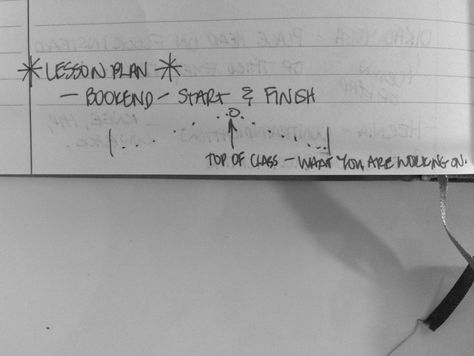

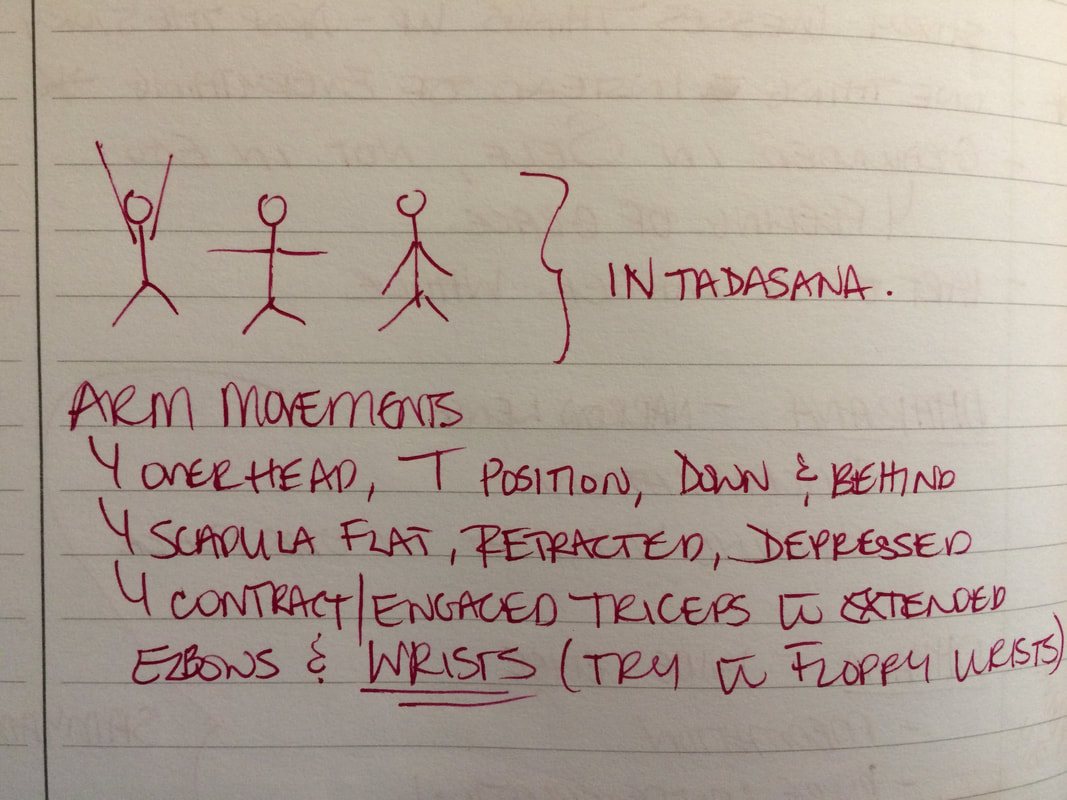
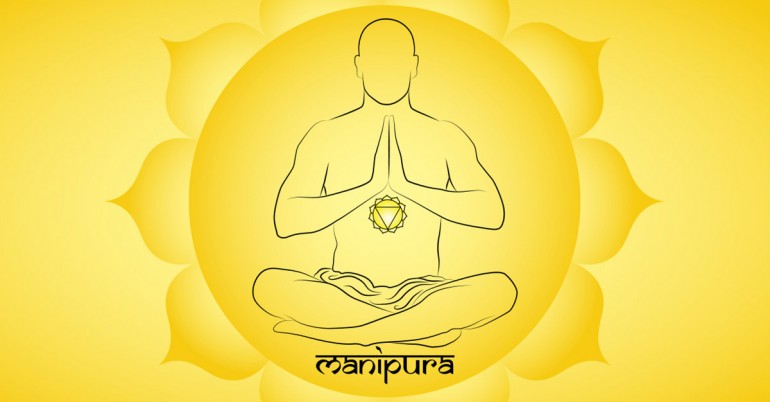
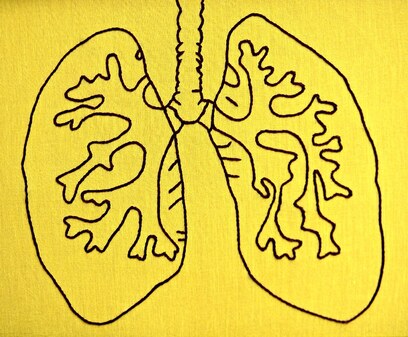
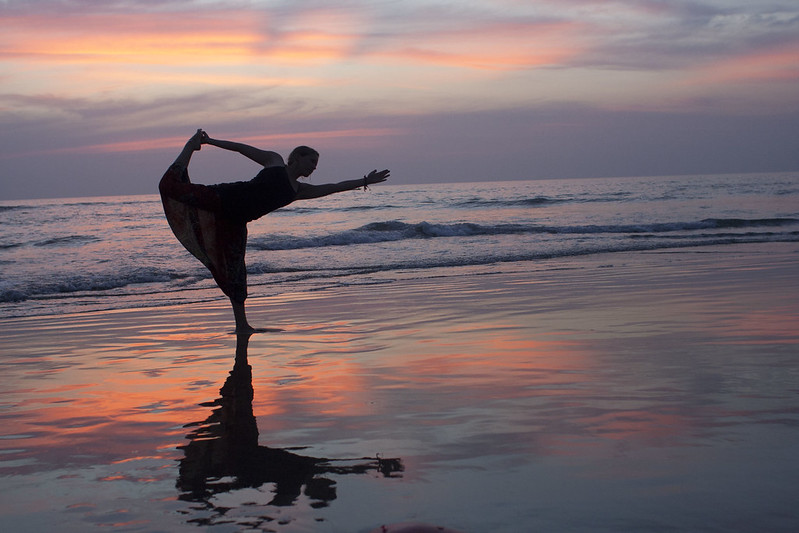
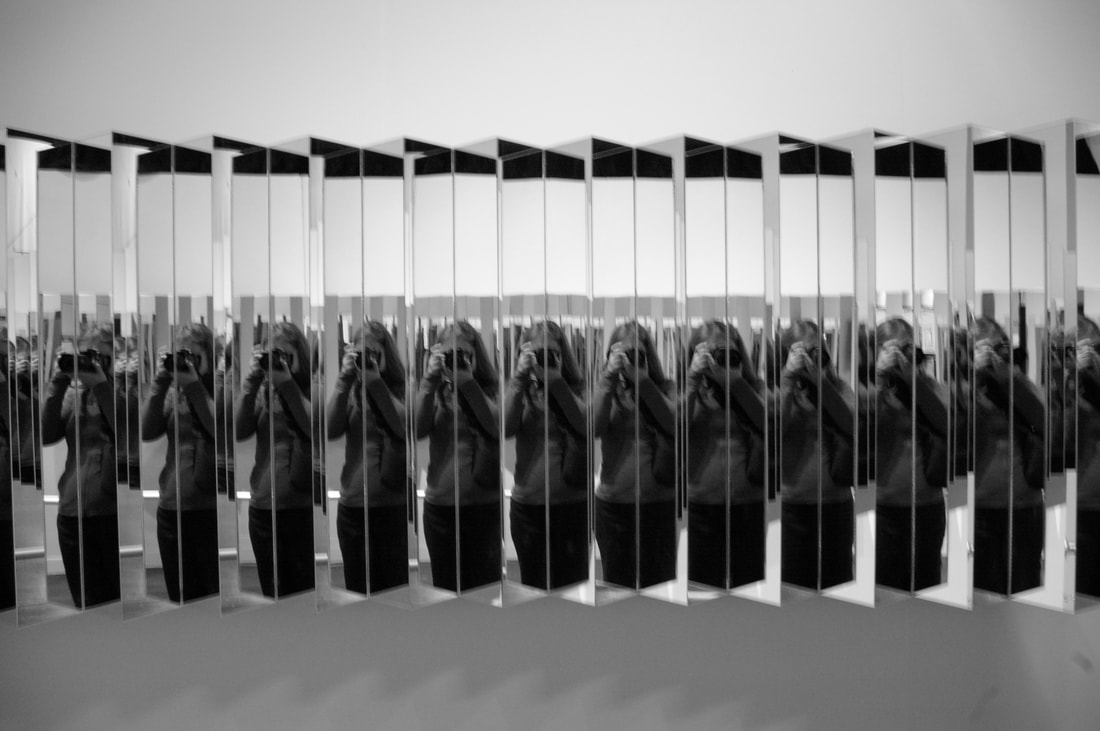

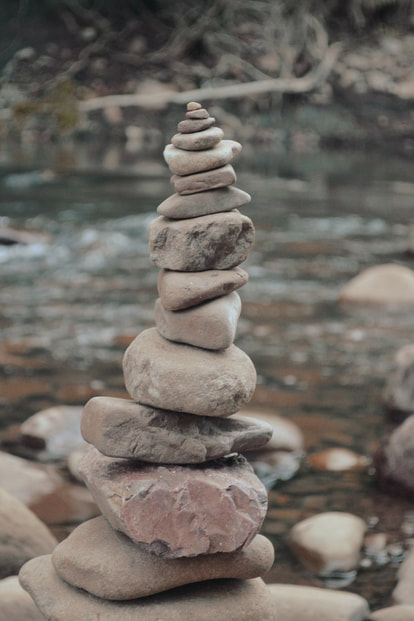
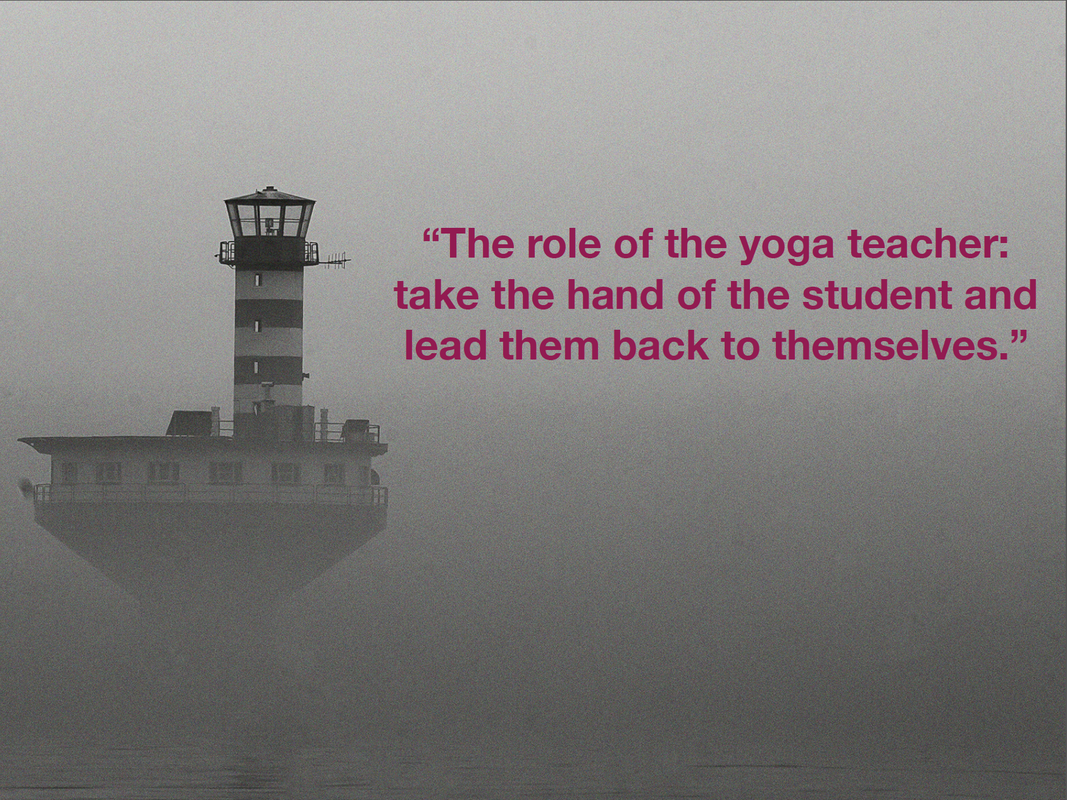
 RSS Feed
RSS Feed